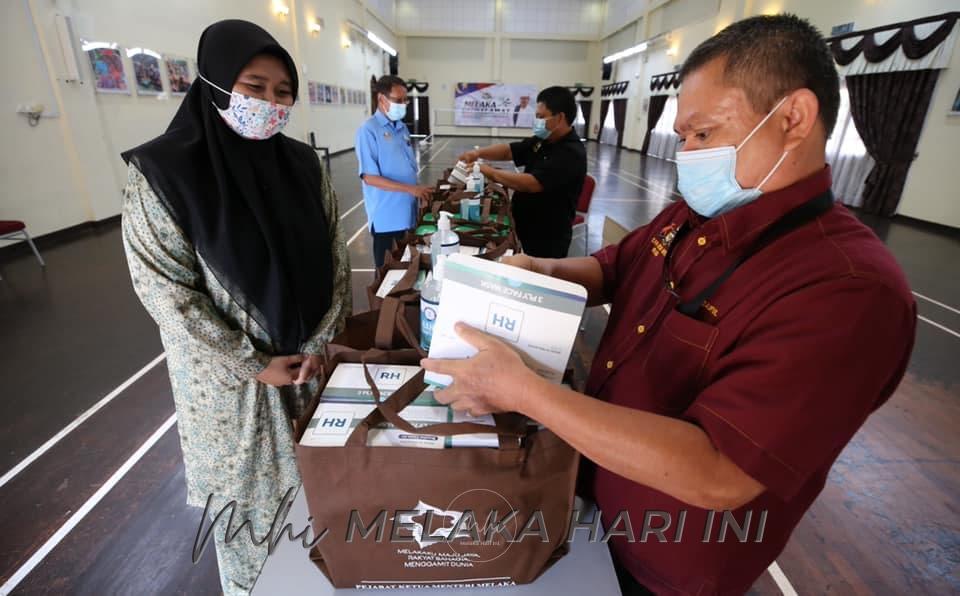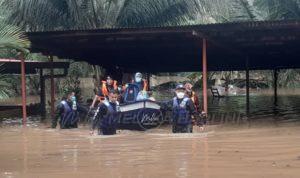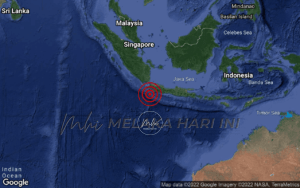
Do surgical masks provide good protection against Omicron?
KUALA LUMPUR, Jan 17 – When Malaysia repeatedly recorded over 10,000 COVID-19 infections daily last year, thanks to the highly infectious Delta variant, some decided it was time to drop the surgical mask and go for a respirator.
One of them, a 45-year-old mother who asked to be identified as Nana, told Bernama her reasoning was simple: she wanted better protection and convenience. Her mask of choice was the KF94, the Korean version of a N95 mask. Other masks of the same range, also known as respirators, are the KN95 from China and the FFP2, the European standard.
“It was more convenient. It was a hassle to double mask every time I went out. Also, my mom has cancer and I wanted to protect her. I didn’t want her to catch COVID-19 from me; it would have been horrible,” she said.
Now as the Delta surge eases, likely to be replaced by the even more infectious Omicron variant, she is confident she has made the best decision to protect her and her family in the near future. Her family members are all vaccinated, with the adults boosted.
The chatter among healthcare workers and health authorities in the United States and Europe seems to bear out her confidence. As the Omicron variant rages through the US, Europe and elsewhere, health authorities and officials in those countries are recommending the public to mask up with higher quality masks.
Unlike them, Malaysia has not updated its mask guidelines since Aug 23 last year, when Health director-general Tan Sri Dr Noor Hisham Abdullah recommended the public to double mask by wearing a surgical mask and a fabric mask over it, along with a face shield.
PREVENTION
Medical experts Bernama spoke to said there is no need to upgrade mask recommendations for the most part as they are concerned that respirators may be too expensive for many to afford. They also said a well-fitting 3-ply surgical mask is sufficient for public use, even for Omicron, and that the mask should be the minimum standard.
Consultant pulmonologist Dr Wong Chee Kuan said this is because most people in Malaysia wear masks when they step out of their house.
“The problem is, overseas, you can see they are not practising universal masking. If you’re not practising universal masking, that actually increases the transmission in their community. Malaysia has made it a rule that you must wear a mask when you go to a public place,” he said.
N95 masks are the gold standard in respirators, promising to filter out about 95 percent of the particles in the air, such as dust, mist and fumes. According to the US Centers for Disease Control (CDC), the minimum size of 0.3 microns of particulates and large droplets will not be able to pass through the barrier. On top of that, N95 masks have an electrostatic mechanism on them that works to attract charged and non-charged particles to them.
Similar respirators like KN95, KF94 and FFP2 provide close to the same level of protection, better than a surgical mask.
Wearing at least a surgical mask has been shown to reduce transmission of the coronavirus by protecting others and the person wearing it. Experts said fit is the most important factor when wearing any mask. If they wear their mask properly, the chances of transmission are low.
“Wearing KN95 or N95 will provide extra protection to the individual wearing the mask, especially when facing the threat of the highly-transmissible Omicron variant. However, most important is a ‘well-fitting mask’ or proper use of the mask,” said University of Malaya Medical Centre (UMMC) public health medicine specialist Associate Prof Dr Rafdzah Ahmad Zaki.
In other words, how one wears the mask, that is, making sure the mask seals the nose and mouth area as much as possible, is as important as what type of mask one wears.
“A lot of people started to wear N95 or KF94 even before the emergence of Omicron, but you have to bear in mind that to wear all these respirators, you need a very tight fit to the face. If it’s too loose, it actually defeats the purpose,” said Dr Wong.
Public health medicine specialist Prof Victor Hoe, who tests the N95 fit for healthcare workers at the UMMC, said the right fit can be hard to achieve for the public as the masks are usually one size fits all. While respirators may promise superior protection from airborne particles, they may mean nothing if people were taking them off to talk or breathe.
“This is why I don’t recommend that normal people, the public, wear those types of masks (respirator). It’s more difficult to breathe and talk when wearing one. So when it’s more difficult (to do those things), we observe a lot of people actually removing the mask while they’re talking,” he said.
However, he supported the use of these masks in certain circumstances, such as confined indoor spaces with other people who may or may not be vaccinated like in an airplane. He also reminded the public to dispose of any mask if it becomes wet or moist, such as from sweating.
AUTHENTICITY
While medical-grade N95 masks require a tight seal on the face, causing the deep indents seen on the nose and cheeks of healthcare workers, the respirators available in the market are not always the real deal.
In the United States, the authentic ones would have a NIOSH symbol on them and an expiry date on the box since the electrostatic charge degrades over time. In Malaysia, medical masks would have certification from the Medical Device Authority (MDA).
As for the non-medical N95 and other respirators or even fake ones made available to the public, their effectiveness cannot be guaranteed, a spokesperson from MDA told Bernama.
Experts, however, said these masks still work in reducing transmission in public settings.
“The public does not need to use real medical devices as they are not directly exposed to a confirmed infectious patient. The NIOSH-certified masks are tested for medical use or occupational use. As long as the mask is well fitted, and worn properly, it should be alright,” Dr Wong said.
To check whether a mask works, there are several tests the public can conduct, such as the flame test (try to blow out a flame from 30 cm away with your mask on, making sure to steer clear of the flame), sniff test (try to smell artificial sweetener like Sweet and Low with your mask on) and light test (stretch your mask out against bright light and try to see it through the mask).
If you can do any of these things, then it means your mask does not work as intended, according to researchers at Stanford Medical working with the World Health Organisation (WHO) to develop mask standards.
A cloth mask is largely useless, with little ability to filtrate. However, experts said if coupled with a surgical mask, they can be effective at protecting the wearer by closing the gaps on the side of the face.
Dr Rafdzah noted that surgical masks cannot filter anything smaller than a bacteria but added that “if everyone in a public area is wearing a cloth or surgical mask, this is enough to prevent the spread of the virus in the area, and this will reduce the chance of transmission”.
Despite assurances from the experts, Nana, the woman taking care of her cancer patient mother, has no plans to go back to wearing the surgical mask anytime soon.
“I have a son too. I don’t want anything to happen to him either,” she said. -BERNAMA
Langgani saluran Telegram kami untuk dapatkan berita-berita yang terkini.


